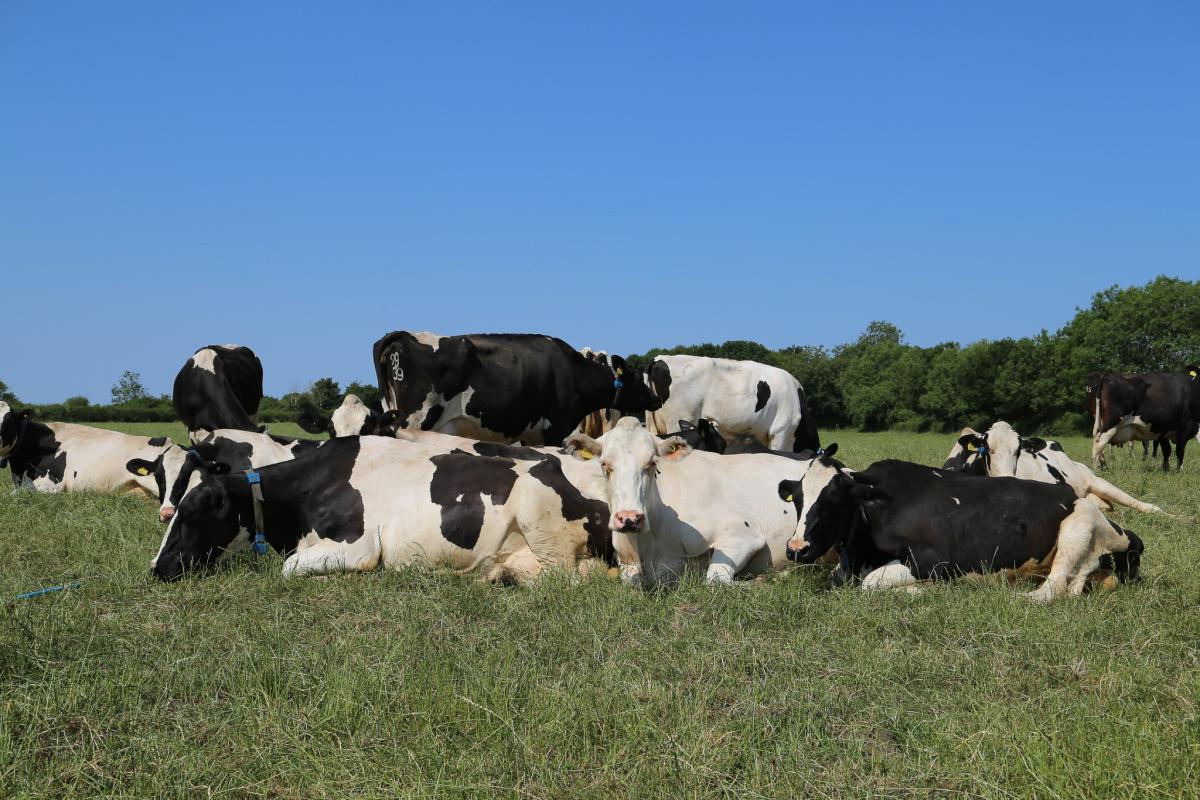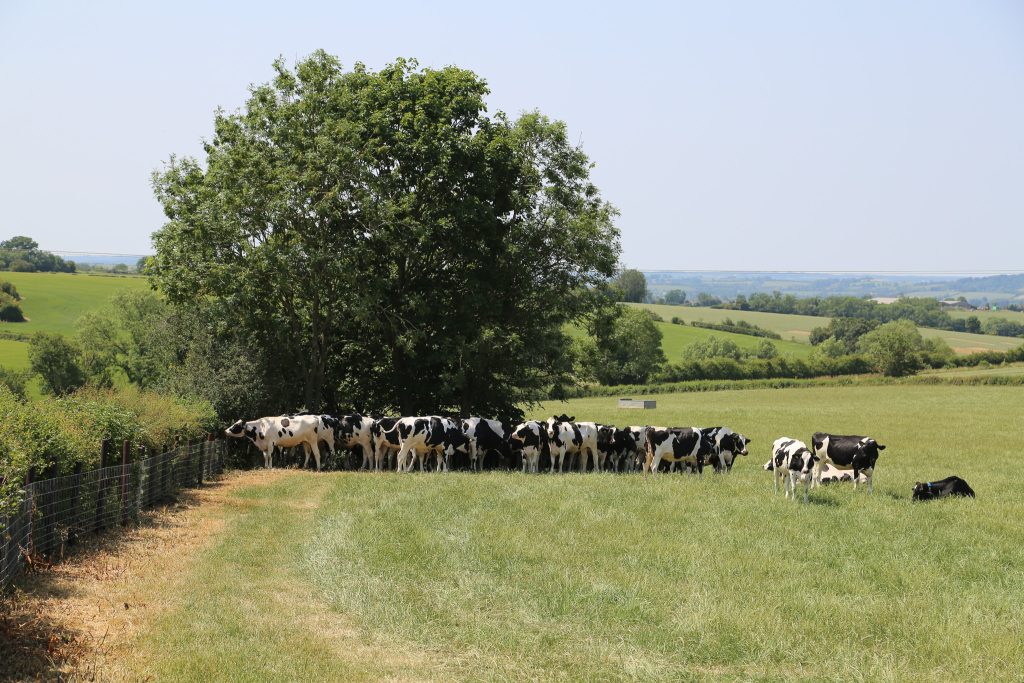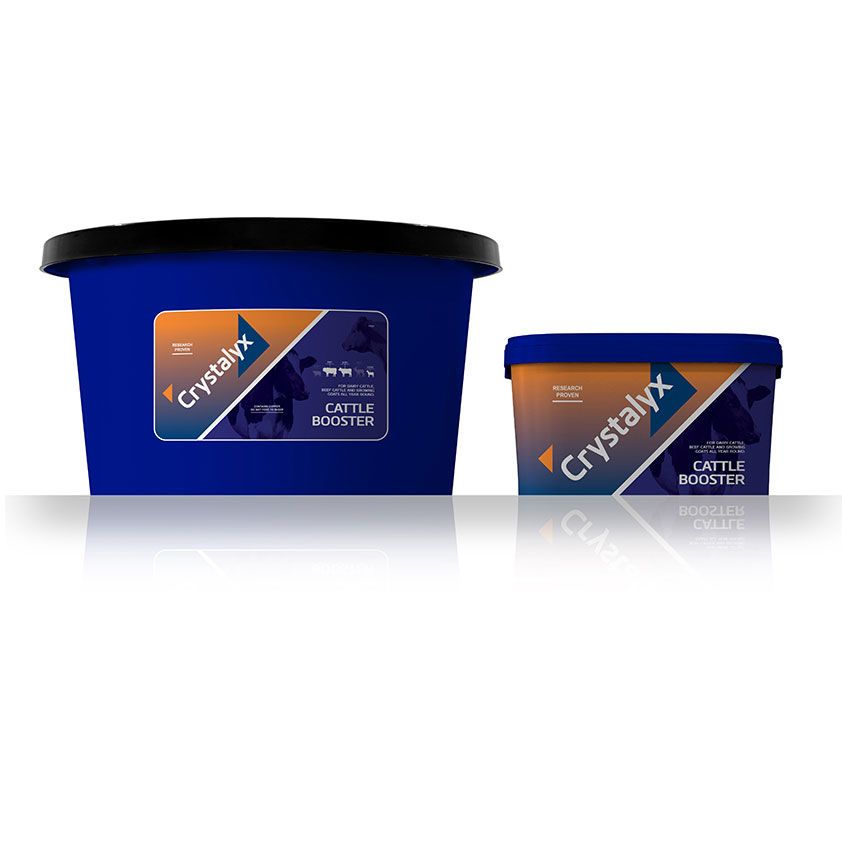
As temperatures rise and rainfall becomes increasingly unreliable, farmers across the UK are facing a familiar but growing challenge: parched fields and slowing grass growth. For livestock farmers in particular, the heatwave spells trouble. When grass stops growing, so does the primary feed source for cows, sheep, and other grazing animals which puts pressure on forage reserves, animal condition, and long-term grazing plans.
While the weather is beyond anyone’s control, how we respond to it isn’t. One simple yet effective tool that’s proving invaluable during hot, dry spells is the humble mineral block. These licks do more than just top up essential nutrients; they can help support healthy grazing behaviour, improve feed efficiency, and maintain animal condition when natural forage is lacking.
In this guest blog, Crystalyx share a simple solution to help control livestock during variable grass growth through the heat.
Understanding the weather impact on grass growth
This spring we’ve seen a significant drop in grass growth rates compared to last year due to the record-breaking early dry weather.
This variability in grass quality and quantity directly impacts forage availability, making it even more important to keep an eye on the nutritional content for grazing cows and sheep at pasture.
A great starting point for understanding more about what nutrition is available through grass for your grazing stock is the AHDB’s Forage for Knowledge tool.

The resource is updated weekly, enabling farmers to see at a national and regional level how grass quality and quantity is being impacted by the weather.
If you have your own plate meter, you can regularly measure your swards, but if you don’t have access then the Forage for Knowledge data is a helping hand to guide decision-making, helping you adjust to fluctuations in grass quality.
Controlling nutrition for grazing stock
With unpredictable grass growth rates and inconsistent forage quality, it’s crucial to ensure grazing cows and other livestock are receiving enough nutrition.
While grass may appear green, what is often overlooked is whether it is providing the dry matter, digestibility, and essential minerals that livestock need for their health and long-term productivity.
Supplementing with a mineral lick for cattle can be a tried and tested solution to balance grass – improving forage intake and digestibility to protect and promote livestock performance from season to season.
Introducing a simple solution: mineral licks for cattle and sheep

While we cannot control the weather, the good news is that farmers can control nutrition in forage-based systems to supplement livestock needs. Simply adding the right feed lick to your routine can lead to great results.
Crystalyx Cattle Booster is a tried and tested feed lick that supplements cow forage, boosting performance in both beef and dairy systems. Research from the Scottish Agricultural College (SAC) showed that cattle supplemented with Cattle Booster at grass grew 28% faster than those without.
This delivered an impressive additional profit of £32.62 per head, an 8:1 return on investment, making it clear that supplementation with Crystalyx really stacks up.
Potential to reduce future problems
Ensuring your livestock are receiving a balanced diet and reliable nutrition year-round can help improve long-term productivity and build resilience to seasonal challenges to help prevent future problems from occurring within your stock.
If concerns like low fertility or poor daily live weight gain sound familiar, adding a proven feed lick such as Crystalyx Cattle Booster could be the answer.
Feed licks – forward planning whatever the weather
When it comes to controlling the uncontrollable in variable grass growth rates, feed licks offer a dependable solution to fill nutritional gaps.
The Crystalyx range is designed to meet your livestock’s nutritional needs year-round. With a unique formulation, our products often require less than half the intake of other cattle or sheep mineral licks, ensuring your supplementation performs consistently whatever the weather. They play a key role in:
- Productivity and performance
- Improving animal health
- Increasing fertility and milk yield
- Deterring biting insects
- Saving labour
